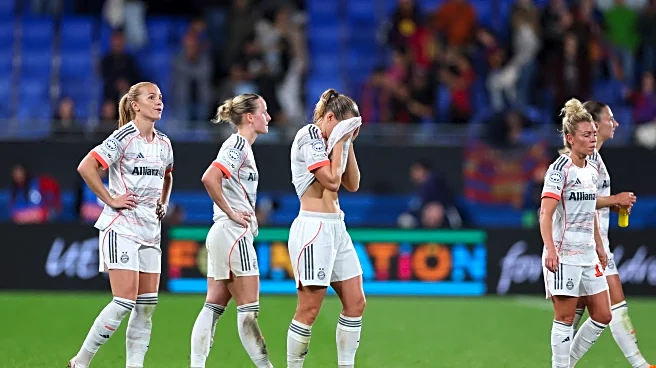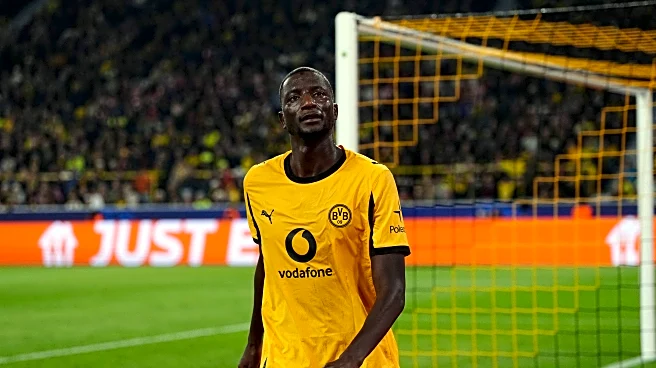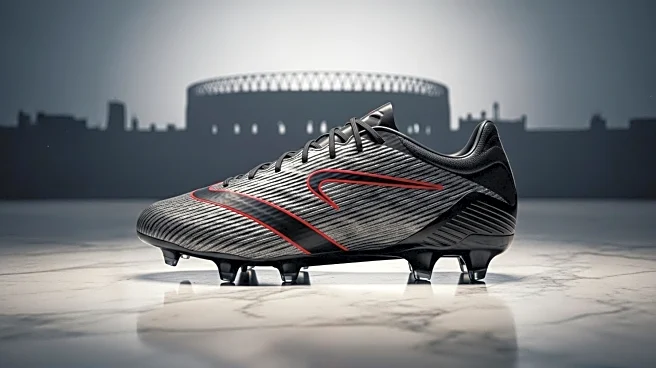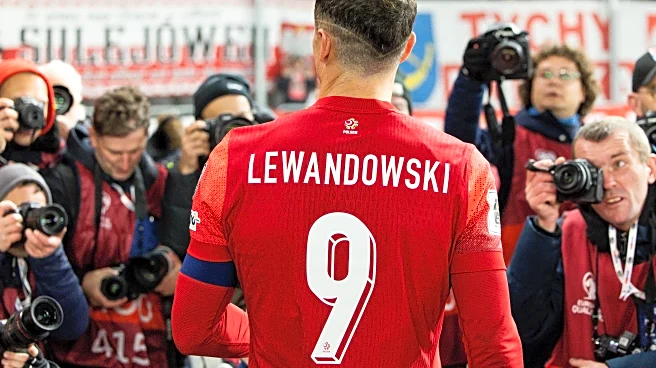Bayern Munich’s Frauen team went to Barcelona last week for a Women’s Champions League match and lost 7-1. Despite the domestic success that Bayern have seen recently, they have never even been to the finals of the Champions League. Four German teams have won the ultimate European prize, but but some of the most successful German clubs are struggling in recent history. If Bayern — and other women’s teams — fail to invest more into German soccer, other clubs and nations are going to continue to out
perform Germany and their clubs on the international stage.
History
Germany’s DFB outlawed women’s soccer in 1955. Some clubs and even an unsanctioned national team still played during this ban. Women’s soccer was finally sanctioned in 1970, but the DFB remained mostly uninvolved for another decade. West Germany was invited to an unofficial world championship tournament in 1981, but did not yet have a women’s national team. The director of the DFB did not want to admit they did not have a team, so they sent the most recent Pokal champion, and they won the whole thing. After that, the DFB organized a national team. It only took Germany until 1989 to qualify for the finals of a major tournament.
National Team
Germany hosted the 1989 Women’s Euros, but still had to qualify for the final tournament. They won it all on their first try, beating defending champions Norway in the Final. This started a dominant run of winning eight of the next nine, including six in a row from 1995 to 2013. They are the most successful nation in the Women’s Euros and have only lost one Final match out of nine trips. Germany qualified for the first edition of the Women’s World Cup in 1991 and took fourth place that year. They have qualified for each tournament since and became the first to win two World Cups in a row in 2003 and 2007. They also won the gold medal in the 2016 Olympics.
Since 2016, Germany has been trending down and we have seen other European nations emerge as powerhouses. England beat Germany in the 2022 Women’s Euros Final and then beat Spain this summer in this year’s Final. In the 2023 Women’s World Cup, Spain beat England in the Final to win their first World Cup. Germany did not make it out of the group in the last World Cup but made and injury-riddled run to the semi-finals of this year’s Euros. As we see below, England and Spain are also eclipsing Germany in club competitions.
Clubs
Professional women’s club soccer has only been around in an organized league system since 1974. Below is a selection of German clubs that have seen success, but are either struggling now to remain relevant or have completely fold and/or been absorbed into an established men’s club.
The most successful team from the early days was SSG Bergisch Gladbach. They won nine German Championships before the single league top-tier Bundesliga was formed. They also won the DFB-Pokal der Frauen three times. Perhaps most notably, Bergisch Gladbach was the team that the DFB sent to the unofficial world championships to represent Germany before they have a national team. They won that tournament against other national teams. In 1989 they transferred their license to a team in Cologne, who has also folded and transferred it again to Bayer Leverkusen. Even though they have not been around for over 35 years, Bergisch Gladbach still hold the title of record champions or Rekordmeisterinnen.
Turbine Potsdam is another example of a formerly successful team. Potsdam – located just outside of Berlin – was in East Germany. Turbine was the most successful women’s team in East Germany and brought that to the reunified Germany and the newly formed Frauen Bundesliga. They won the Bundesliga six times, including their final four coming in successive seasons from 2009-2012. They also won the Champions League twice in 2005 and 2010. Since their last Bundesliga title, Turbine has been on a slow decline. They were relegated in 2023, came back up last season, but then went straight back down to the 2. Liga for this season.
1.FFC Frankfurt was originally a separate team from the men’s team Eintracht Frankfurt and under that name they saw their most success. They won the Bundesliga seven times – tied for second with Bayern and Wolfsburg – the DFB-Pokal der Frauen nine times – second only to Wolfsburg – and the Champions League four times – second only to OL Lyonnes. Bayern’s men’s treble in 2013 was not the first continental treble, Frankfurt did it 2002 and 2008 and Wolfsburg did it the same year as the Bavarian men. After years of dominance, Frankfurt has not finished higher than third place since 2014. Since merging with Eintracht Frankfurt and taking on their branding, they have finished third place four seasons in a row.
While we are complaining about Bayern not spending enough money on their Frauen team to get them to the top tier of Europe, other German clubs are barely holding on. The most recent financial struggle that stands out is MSV Duisburg. A successful team, playing as FCR Duisburg is one of the four teams to have won the Women’s Champions League, doing so in 2009. They merged with men’s club MSV Duisburg and took on the Zebra branding. Since the merger, Duisburg has been back and forth between the Frauen Bundesliga and the 2. Liga. In 2024, Duisburg women’s team finished in last place in the Bundesliga, but due to their men’s team also going down to the men’s Regionalliga (4th division), the women’s team did not have the funding to remain in the 2. Liga and had to drop to the Regionalliga (3rd division).
Bayern
Bayern’s Frauen team plays most games at the Bayern Munich Campus – where the Bayern youth teams also train and play – in the main stadium, which holds 2,500. Of the 16 teams in this season’s Women’s Champions League, Bayern has the second smallest stadium. Only FC Twente of the Netherlands (2,000) play in a smaller stadium by capacity. They have had good turnouts when they have played at the Allianz Arena – including a record-setting 57 thousand to begin the season last month. While it would not be sustainable for the Bayern Frauen to bring in 50 thousand every week – unfortunately – they should have something better than a 2,500-seater.
Over the last few seasons, Bayern have started to assert their dominance in Germany. They ended Wolfsburg’s league dominance in 2022-23 and have now one three straight Bundesliga Titles. They also were finally able to win their second DFB-Pokal der Frauen last season, ending a ten consecutive run by Wolfsburg. Bayern has also won the German Supercup both of the last seasons since it came back after a long hiatus.
As Bayern have had this domestic success, their results in Europe have been inconsistent and are not trending up as they have in Germany. Their best results in Europe have been semi-final appearances in 2019 and 2021. Since then, they have not made it past the quarterfinals and even failed to get out of the group two seasons ago.
This week for the Bayern Frauen perfectly portrayed what I am trying to iterate in this article. Bayern was utterly embarrassed by Barcelona mid-week but then came back to Bundesliga play and beat Wolfsburg 3-1 in Wolfsburg. Bayern has invested enough to be competitive – maybe even dominant – in domestic competition but have not done anything close enough to win the ultimate European prize.
When we look at Bayern’s squad compared to other European contenders, some key factors stand out. According to Soccerdonna.de – a site similar to Transfermarkt for the women’s game – Bayern’s squad is valued at €7.8 million. This figure is based on what each player’s transfer fee would be if they were to move clubs today. Bayern’s value is more than double that of any other German club. Wolfsburg, for example, is valued at €3.8 million. However, compared to their European foes this year, Bayern ranks sixth in squad value. Barcelona is the most valuable at €12.7 million – and it showed on Tuesday – followed by Chelsea, Arsenal, OL Lyones, and Real Madrid all ahead of Bayern.
As far as individual players, Bayern only have one player – Klara Bühl – in the top 20 most valuable player playing in the Champions Leauge. Other top competitors have multiple players on this list, in addition to an overall higher squad value. Looking forwards to the future and development of players, Bayern also only have one player – Alara Sehitler – in the top 20 most valuable under 21 years old. Very little information is available about the female campus teams. Bayern’s second team has struggled to even stay in the second division the last few seasons.
Another notable statistic – which also affects the squad value – is the average age of the squads. Bayern has the oldest average squad at 27.3 years. This is nearly three years older than the average age of the rest of the Champions League field.
The Bayern Frauen are a fun team to follow. They put together an entertaining product on the field – in domestic competitions – and have fun off the field. They have legends that have won Champions Leagues with other teams but might now be past their time. They are a very likeable, closeknit team, but can only take you so far. As a fan who has followed them very closely over the last four years, it hurts to say it, but Bayern needs to reconsider their squad building. They need to invest more in this squad – bringing in more talented and younger players – and infrastructure – including a better stadium situation and better youth development. If Bayern choose to let the Frauen department stay as it is and not compete for European titles, either another German team – Frankfurt, Wolfsburg, or even a new face like RB Leipzig or Leverkusen – will take advantage, or all of women’s soccer in Germany will suffer and other countries will remain on top.















